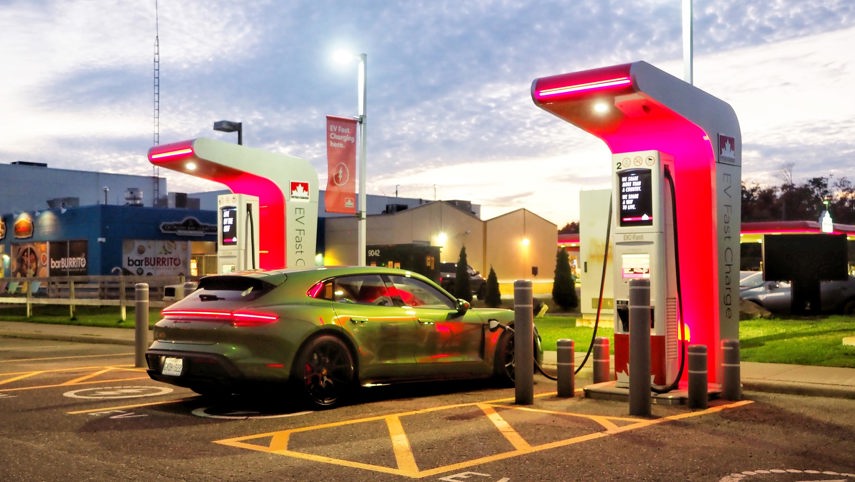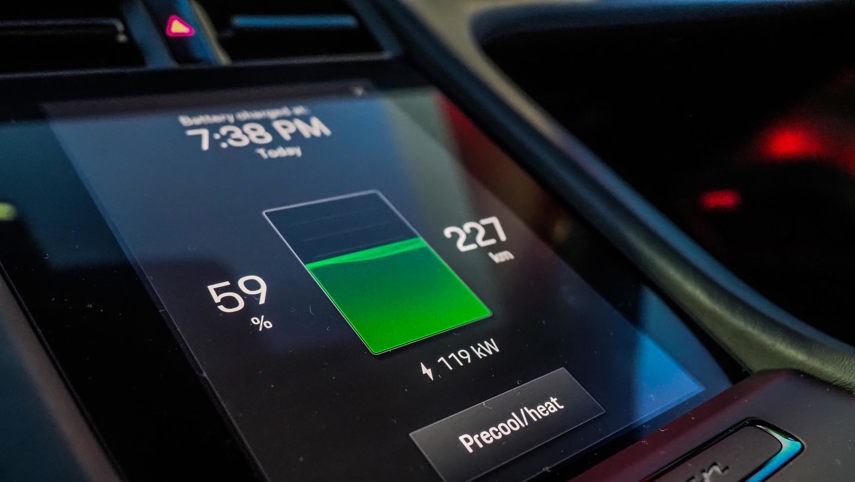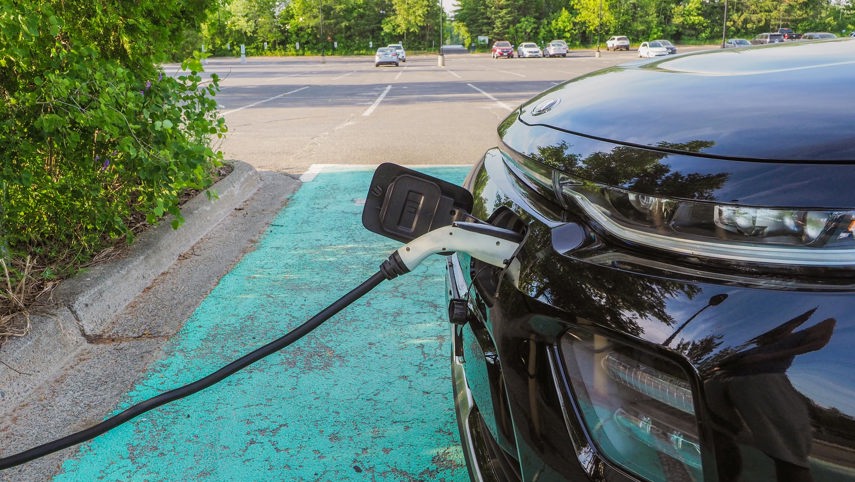Increased interest in electric vehicles (EVs) has many Canadian drivers asking about home charging. We’ve said before that if you can charge at home, buying an EV is almost a no-brainer because it’s affordable and convenient. The public charging infrastructure can be frustrating to use, so home charging is really the way to go if you want an easier EV experience.
We’ve called on some industry insiders to help answer some of your most common questions about charging an EV at home.
What’s the cost of installing a Level 2 home charger?
I would advise shopping Level 2 chargers on sale (hint: Black Friday sales can knock hundreds from the price) and you’ll find units for less than $1,000 or so. Installation can range from a few hundred dollars (assuming your electrical panel and charger location are in close proximity), to $1,000 or more for increasingly complex installs. Always hire a professional to install a charger in your home.
What are the available EV rebates in my local area and how do I know if I qualify for them?

Ryan Chan, EV Charging Expert, ChargeFWD.com: “Through the Federal government, there is the Zero-Emission Vehicles (iZEV) Program where eligible vehicles can receive up to $5,000 in rebates off the purchase cost of the vehicle. On top of the Federal rebate, there are also provincial rebates in B.C., New Brunswick, Nova Scotia, P.E.I., and Quebec for the lease and purchase of EVs. B.C., Quebec, Alberta, and Yukon also offer EV charging rebates for the supply and installation of home EV chargers.”
Can I replace a worn charge cable on a home charger?
From Ivycharge.com: “Home charger cables can be replaced. We highly recommend contacting the manufacturer and ensuring that the cables are replaced by a licensed electrician.”
If I install an EV charger now, what happens when the technology changes in 10 years?
Chan: “The current format of Level 1, 2, and 3 charging is being adopted and implemented by automakers, governments, and businesses around the world. As there may be advances in battery technology and the development of EVs, the method of EV charging is mostly standardized. Therefore, it is expected that there will be minimal changes to the charging technology over the next 10 years.”
Can I charge a Tesla on a Level 2 home charger?
Chan: “Absolutely, our recommendation would be to install an EV charger with a Type 1/J1772 plug and use an adapter to charge the Tesla (which has a proprietary charger). The most common Level 2 charging port throughout North America is Type 1/J1772. We would recommend avoiding installing an EV charger with a Tesla connector, as that connector is only compatible with Tesla vehicles and if the homeowner purchases a non-Tesla vehicle in the future, they will not be able to use the charger.”
What do I do if I live in a condo and want to have an EV charger installed?

Chan: “If you live in an apartment or condo and would like to install an EV charging station, you first need approval from your strata council. Approval from your council is required because in a condo parkade, the power comes in from the house panel on common property that feeds services in common areas shared by all residents. Secondly, contact your local EV charging specialist to conduct an electrical capacity assessment and to determine the total cost of the project.”
Can I install an EV charger near a gas meter?
Yes, but not too close. The Electrical Safety Authority (ESA) outlines regulations and guidelines used to determine clearances between electrical equipment and equipment that deals with combustible gas – like propane tanks and natural gas meters.
In the same way that an outdoor gas-burning appliance (for instance, a pool heater) needs to be installed at a minimum distance from household air intake sources (like an air exchanger inlet), electrical equipment sometimes needs some space if it’ll be installed near a gas meter.
“It is best to keep the EVSE (Electric Vehicle Supply Equipment) at least 1 metre from a natural gas meter vent, which is the open port on the side, to be safe,” explains Keith Bartlett, Technical Advisor Manager, Electrical Safety Authority.
“This vent can be repositioned by a certified gas installer if there are limited options to locate the EVSE. For propane, the EVSE shall not be closer than 3 metres to the vent or fill openings. There are natural gas meters that will allow the distance to be reduced to 0.3 metres, but consult with your local natural gas supplier to verify the type of meter installed at your property.”
What’s the cheapest way to charge an EV at home?
“Level 1 charging on a 110V wall plug if you have access,” says Chan. Level 1 charging doesn’t require any special installation or equipment — it just uses a standard household outlet. The downside is that it will take an extremely long time to charge a car, about 40 to 50 hours for an electric vehicle or 5 to 6 hours for a plug-in hybrid to go from empty to a full charge.
Can EV charging cables get stolen?

When plugged in, EVs lock the charger in place so it can’t be removed.
Ivycharge.com: “The fixed physical connection between the cable and charger is a natural deterrent from theft, much like having a fixed lighting fixture. However, like other household fixtures, it is still possible to remove them with excessive force and/or tools. Ivy recommends installing the charger in a location customers deem safe, like in a garage, where possible.”
Is it safe to plug in my EV if it’s raining or snowing?
Chan: “To recharge your EV, you connect the charging port of your EV to the EV charging station with the supplied charging cord – but nothing happens until the charging station and EV establish communications and conduct the necessary measurements to ensure everything is good to go before delivering any energy to the vehicle. For example, the charging cord won’t be energized if the vehicle isn’t plugged in. Once the EV determines it’s safe to proceed, then current will flow. The EV monitors the charging process and stops the flow if there’s a disruption.
“What happens if it’s raining or snowing? It’s business as usual. It is not recommended to have the charging plug sit in a puddle of water or the charging port to be covered with snow due to possible corrosion or damage. But otherwise, both EV and EV charging stations are designed to operate in just about any kind of weather – except for floods and hurricanes.”
Why does an EV charger need Wi-Fi?
“Not all EV chargers need Wi-Fi, but ‘smart’ EV chargers will need access to the internet to communicate with other EV chargers and the cloud to offer features such as access control, load management, and billing/metering,” explains Chan.
Personally, I have used a Level 2 home EV charger without an internet connection for the past six years with minimal issues. While a Wi-Fi connection isn’t a requirement, it does offer a few benefits. One reason to consider a Wi-Fi equipped charger is the ability to control your charger and scheduling from an app on your smartphone, though most EV models provide similar capability through their own software and app, even when connected to a charger without Wi-Fi.
If my car can control charging/scheduling through an app, why would I need a pricier “smart” EV charger at home?

Chan: “For a single-family home, the most cost-effective method is to purchase a non-networked charger. Smart chargers are geared towards condo charging, as the smart capabilities allow the charger to bill the individual customers for their energy usage, provide access control, and provide electrical load management between multiple charging vehicles. Electrical load management is vital to condo charging, as the power comes from a house panel on common property that feeds electrical services to all residents.”
Will an EV charger work at 40 below?
Yes, an EV charger will work in the extreme cold, but it’s normal to expect these conditions to affect the performance of your EV, as well as its charging equipment. You do not, however, need a specialty cold-climate charger to charge an EV in the dead of a Northern Ontario winter. My bare-bones Chargepoint Level 2 charger reliably recharges EVs in extreme cold, right down to 40 below, too. At these temperatures, I expect charging to take longer, though I’ve never experienced a failure to charge fully overnight, even on the coldest nights of the year.
Does a Level 2 charger need to be hard-wired?
Chan: “Yes, all Level 2 charger installations are hard-wired and require a certified electrician to install. As a part of the installation, it is vital that the electrician conduct electrical capacity assessment and receives the necessary permits before any EV installation work can begin. Consider that the amount of energy coming out of the Level 2 charging station is similar to the amount of energy that a stove would be using if all the burners were on and the oven was on at the same time.”

